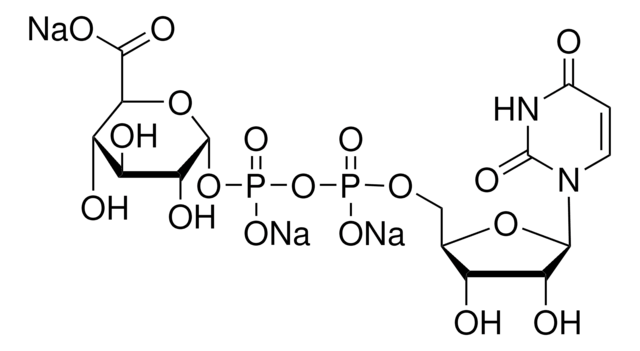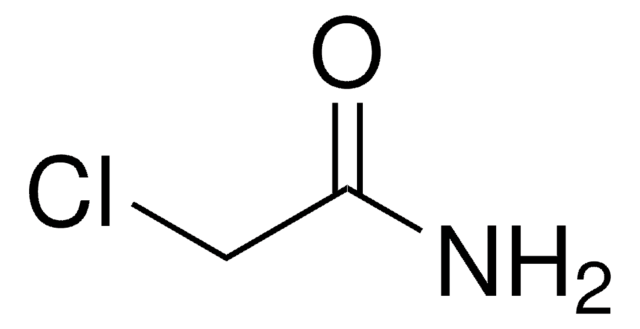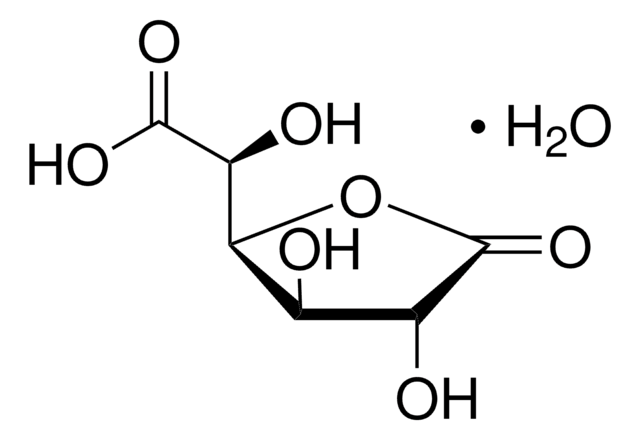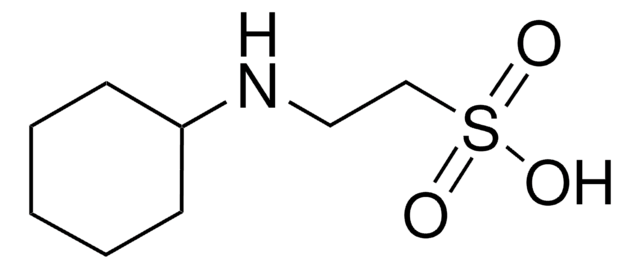E9502
EPPS
≥99.5% (titration)
Synonym(s):
4-(2-Hydroxyethyl)-1-piperazinepropanesulfonic acid, 4-(2-Hydroxyethyl)piperazine-1-propanesulfonic acid, N-(2-Hydroxyethyl)piperazine-N′-(3-propanesulfonic acid), HEPPS
About This Item
Recommended Products
Quality Level
Assay
≥99.5% (titration)
form
powder
pH
7.3-8.7
useful pH range
7.3-8.7
pKa (25 °C)
8.0
pKa
8
mp
237-239 °C (lit.)
solubility
H2O: 25 g + 50 mL, clear, colorless
λmax
A290 at ≤0.1 (C=33% w/w)
application(s)
diagnostic assay manufacturing
SMILES string
OCCN1CCN(CCCS(O)(=O)=O)CC1
InChI
1S/C9H20N2O4S/c12-8-7-11-5-3-10(4-6-11)2-1-9-16(13,14)15/h12H,1-9H2,(H,13,14,15)
InChI key
OWXMKDGYPWMGEB-UHFFFAOYSA-N
Looking for similar products? Visit Product Comparison Guide
Related Categories
Application
- to verify the effect of pH variation on the proteolytic activity of the posterior midgut (PMG) contents and anterior midgut (AMG) tissue homogenate
- to prepare a destaining buffer to destain intensely stained gel pieces
- to prepare digestion buffer for in-gel enzymatic digestion
- to reconstitute the digested peptides for the processing of brain-derived extracellular vesicle (EV) proteins and 16-plex isobaric tandem mass tag (TMT) peptide labeling
Storage Class Code
11 - Combustible Solids
WGK
WGK 3
Flash Point(F)
Not applicable
Flash Point(C)
Not applicable
Personal Protective Equipment
Certificates of Analysis (COA)
Search for Certificates of Analysis (COA) by entering the products Lot/Batch Number. Lot and Batch Numbers can be found on a product’s label following the words ‘Lot’ or ‘Batch’.
Already Own This Product?
Find documentation for the products that you have recently purchased in the Document Library.
Customers Also Viewed
Our team of scientists has experience in all areas of research including Life Science, Material Science, Chemical Synthesis, Chromatography, Analytical and many others.
Contact Technical Service









